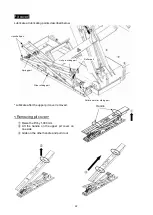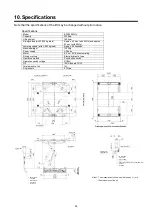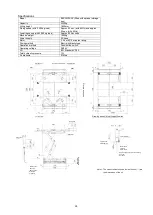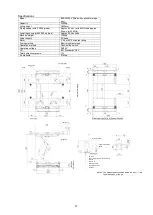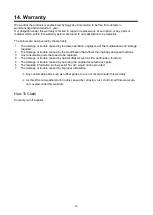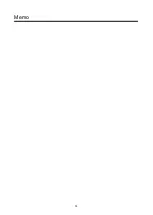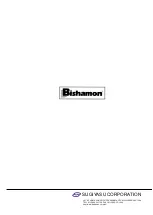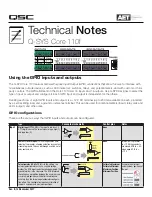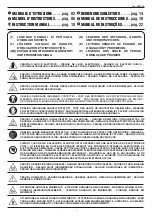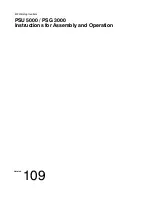
20
8. Regular Inspection
Regular inspection are essential inspection procedures to secure safety (preventing vehicle falling
accidents and personal accidents) and to ensure the lift can be used for a long time, which are
performed along with the pre-operation check.
Be sure to perform the regular inspection at least once each month, in addition to the pre-operation
check that is performed every day, in order to ensure that the lift is used safely. In the event when even
slightly abnormal condition arises during routine use of the lift, immediately suspend the use of the lift
and make sure it is repaired properly and verify safety before using the lift.
Requesting the lift supplier where the lift was purchased for repairs on abnormality.
Inspected location
Inspection item
Synopsis of inspection
Referenced
section
Lubricating location
Grease fittings
Lubricate each lubricating location
8-1
Inside pit
Drainage and foreign
matter inside the pit.
Raise the lift unit and verify to ensure the pit
is properly drained inside and there are no
foreign articles.
8-2
Lowering stop hook
Operating conditions of
lowering stop hook.
The lift must ascend while making clicking
sounds when raised.
8-3
Air circuit
Couplings and air tubes.
Verify to ensure there are no cracks or air
leaks.
Control panel
Electrical components
(magnet switch, relay,
etc.).
Verify to ensure they are operating normally,
that there are no damages or loose terminal
connections.
Bolts and nuts
Loosening.
Verify to ensure there is no loosening and
tighten as needed.
Lift unit
Rust conditions.
Verify to ensure there is no rust.
Arms
Operation of arm stop.
Thickness of arms.
Verify to ensure that arm stop operate when
the sliding arm is fully extended and that the
thickness of the arms is within standard
range.
Adjustable
supporters
Operation of stoppers.
Rattling.
Verify to ensure that stoppers are reliably
operating when the pads are rotated and
extended to the highest position and that the
rattling range is within 2 mm when moved up
and down while holding the supporter.
Couplers, upper
(Refer to “Lubricating
Locations Diagram” on
page 21)
Loosening of couplers,
upper.
Verify to ensure there is no loosening and tighten
as needed.
* If the part is loose, either replace the part or
tighten with screw locking glue and the like.
Have a qualified service personnel perform a periodical inspection once a year, in addition to
the regular inspection described above.
Request the lift suppliers where the lift was purchased for periodical inspection performed.
Notes for Using Safely

















